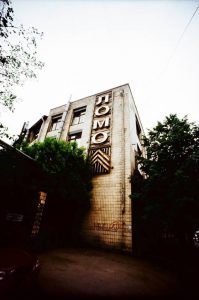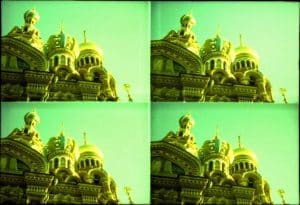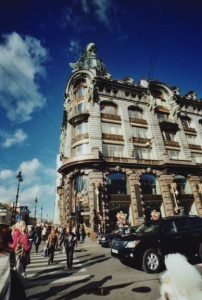Lomography is a style of photography that encourages the use of simple, cheap, lo-fi analogue cameras that often produce pictures with distinct color palates.
Lomography: Hip Before Its Time
Since getting its start in 2010, Instagram has become a cultural phenomenon, amassing more than 30 million users and becoming acquired by social media kingpin Facebook for $1 billion. (That’s billion, with a B.) Whether viewed on a smartphone or online, Instagram photos are easily recognizable by their square shape, manipulated colors, and vintage-inspired feel. And Instagramers themselves are likewise easily recognizable, often seen hovering their smartphones above their lunch or stopping in the middle of a busy sidewalk to take a snapshot of something seemingly innocuous. With a few taps to a touch screen phone, these slice-of-life images can be transformed into something eye-catching, and then shared with networks of users around the world.
The popular aesthetic of Instagram photos, however – the oversaturated colors, manipulated hues, and customizable photo ‘frames’ – predates the iPhone and Android entirely. It has its roots in an under-the-radar photo movement called Lomography, founded in the early 1990s by Austrian students Wolfgang Stranziger and Mattias Fiegl, championing cheap ‘toy’ cameras producing lo-fi film photos.
What does St. Petersburg, Russia have anything to do with this?
To answer that, one needs to take a few steps back in Russian history.

In 1991, an LC-A camera made its way into the hands of Austrian students Stranziger and Fiegl on a trip abroad to Prague, where they bought one second-hand to document their travels in true Soviet style. Intrigued by the aesthetic of the photos that resulted – with shadowy, dreamy vignettes and high color saturation – the pair bought and re-sold LC-A cameras to photography buffs in Austria, increasing the camera’s popularity abroad.
The Lomographic Society
Not long after, Stranziger and Fiegl created what is now called the “Lomographic Society,” which consisted then, as it does now, of Lomographers across the globe who use low-fidelity cameras to produce vintage-looking, vignetted, and brightly-colored film photos. The Lomographic Society even has a list of “10 Golden Rules” to follow as a Lomographer, including “Be Fast,” “Take Your Camera Everywhere You Go,” and “You Don’t Have To Know Beforehand What You Captured on Film.”
Though the two photographers and business partners had created a market for the camera abroad, the LOMO factory where the actual cameras were made was not fairing quite as well. After the fall of the USSR and the opening of Russian markets, imported cameras were hard to compete with, jeopardizing the future of the photographic movement as LOMO was moving to cease production of the camera that started it all.

After a simultaneous Lomographic photo exhibition in Moscow and New York, LOMO factory heads invited the two students to the factory in St. Petersburg, where a deal was reached to supply the photographer-entrepreneurs with 1,000 cameras a month. This allowed the two to establish the first Lomography retail stores, where enthusiasts can buy cameras and film, as well as view miniature photo galleries. The first stores were established in London and Berlin.
Even with international popularity, it wasn’t long before the LC-A camera was again threatened by a faltering economy. Claiming major losses, the LOMO factory was resolute to cease production of the camera. A deal was struck in a meeting of the Austrian students, an Austrian diplomat, LOMO factory heads, and Vladimir Putin – who was then deputy mayor of St. Petersburg – that would raise the prices of the cameras, providing more revenue to continue production. Though this worked for a few years, LOMO officially ceased production of the LC-A in 2005, and manufacturing now takes place in China.
Lomography Today

Much like Instagram, Lomography now has a strong community of enthusiasts around the world. Before the popularization of social networks, Lomographers swapped film photos at small photo exhibitions or even through the mail. Today, the Lomographic community is also online, with web sites in 21 different languages and specialty retail stores in 29 cities, including Rio de Janeiro, Shanghai, New York, Barcelona, and many more major world cities.
Lomography.ru hosts an active community of Russian Lomography enthusiasts, and includes image galleries, blogs, and a calendar of events for Lomographers to display and swap their work.
To view a gallery of Lomography photos taken in St. Petersburg, click here.
Sources:
Lomography: The LOMO Factory in Russia in the Early 1990s







